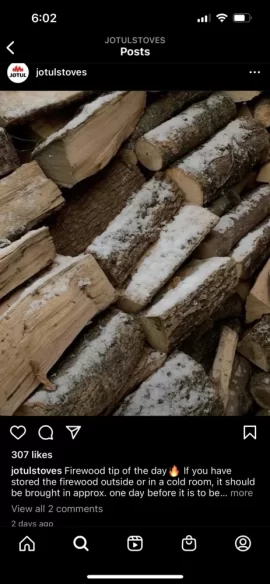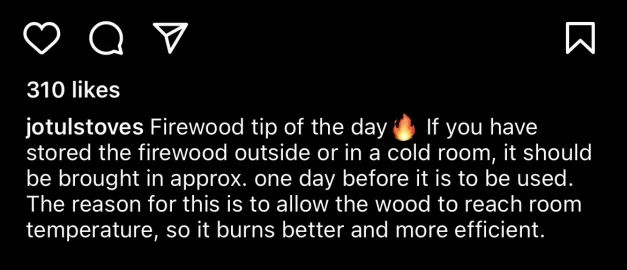I saw the attached post on Jotul’s instagram page. Found it interesting. This forum talks a ton about clean and efficient wood burning, but I don’t think I’ve seen this idea mentioned - specifically that warming wood up to room temp prior to burning it, is cleaner and more efficient. Would others agree?
Interestingly, I think I’ve actually observed this a bit myself. If I stage wood in front of the stove for 24 hours it tends to ignite quicker. Could be because the wood decreases in moisture content being in the dry room air, but I don’t think that’s the case Jotul is making. It seems like they are referring more to the temperature effects of “pre-warming” the wood.

Interestingly, I think I’ve actually observed this a bit myself. If I stage wood in front of the stove for 24 hours it tends to ignite quicker. Could be because the wood decreases in moisture content being in the dry room air, but I don’t think that’s the case Jotul is making. It seems like they are referring more to the temperature effects of “pre-warming” the wood.




